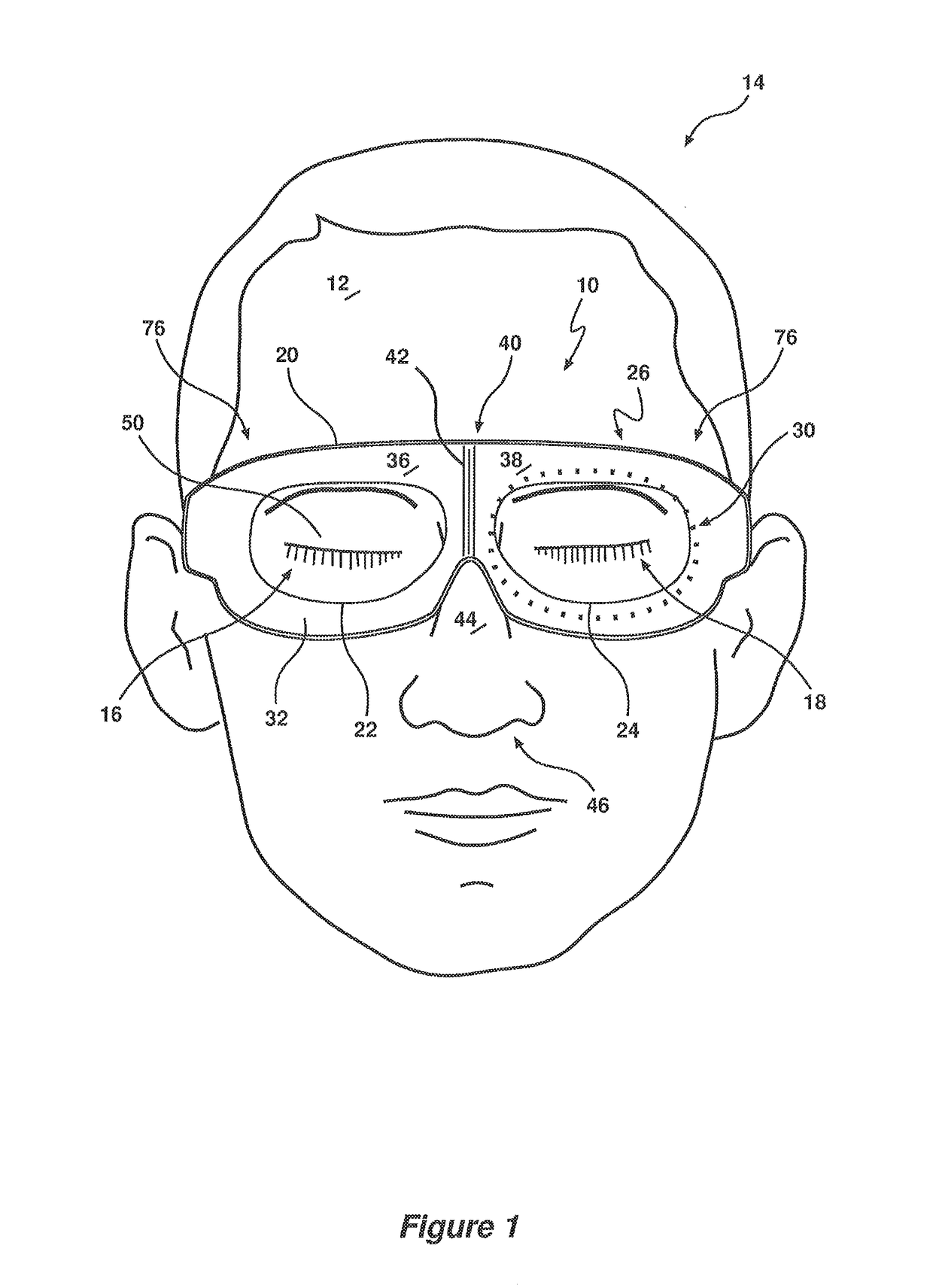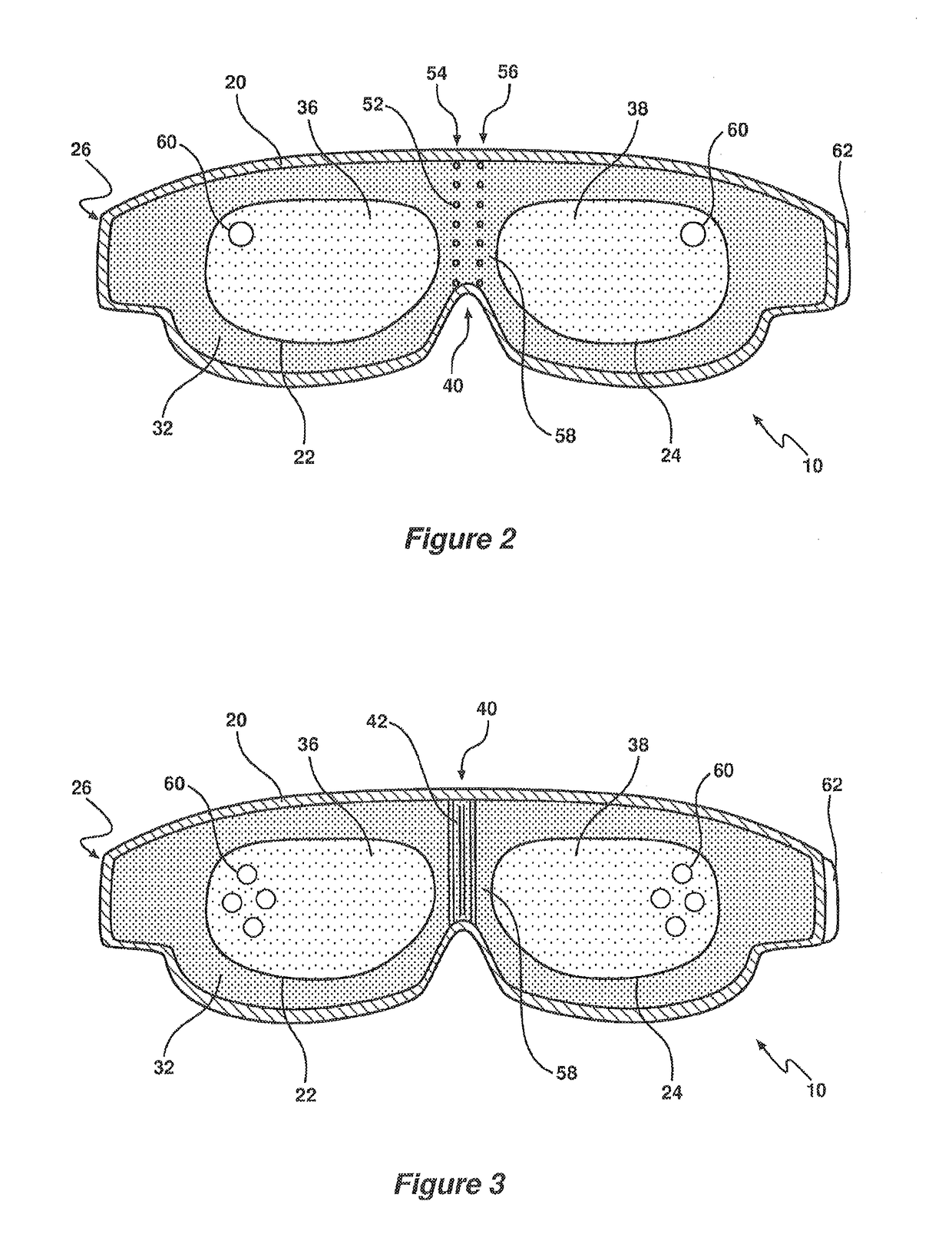Surgical eye shield
a technology of eye shield and surgical technique, applied in the field of perioperative eye shield, can solve the problems of trauma, surgeons, anaesthetists, nurse or other medical practitioners may lean on or place instruments, and the surgeon, anaesthetist, etc., and achieve the effect of increasing the rigidity of the eye shield and facilitating the insertion
- Summary
- Abstract
- Description
- Claims
- Application Information
AI Technical Summary
Benefits of technology
Problems solved by technology
Method used
Image
Examples
Embodiment Construction
[0067]Similar reference characters indicate corresponding parts throughout the drawings. Dimensions of certain parts shown in the drawings may have been modified and / or exaggerated for the purposes of clarity or illustration.
[0068]Referring to the drawings for a more detailed description, an improved surgical eye shield 10 is illustrated, demonstrating by way of examples, arrangements in which the principles of the present invention may be employed. The figures illustrate an eye shield 10 for releasable mounting to a face 12 of a patient 14, used to inhibit pressure being applied to eyes 16, 18 of the patient 14 during a medical procedure.
[0069]The reader should understand that the term eye or eyes used throughout the specification, unless otherwise stated, relates to the eye region in general including the eyelids, eye globe and cornea. Furthermore, the term pressure should be understood to refer to the force per unit area applied down onto the surface of the eye shield by a person...
PUM
 Login to View More
Login to View More Abstract
Description
Claims
Application Information
 Login to View More
Login to View More - R&D
- Intellectual Property
- Life Sciences
- Materials
- Tech Scout
- Unparalleled Data Quality
- Higher Quality Content
- 60% Fewer Hallucinations
Browse by: Latest US Patents, China's latest patents, Technical Efficacy Thesaurus, Application Domain, Technology Topic, Popular Technical Reports.
© 2025 PatSnap. All rights reserved.Legal|Privacy policy|Modern Slavery Act Transparency Statement|Sitemap|About US| Contact US: help@patsnap.com



